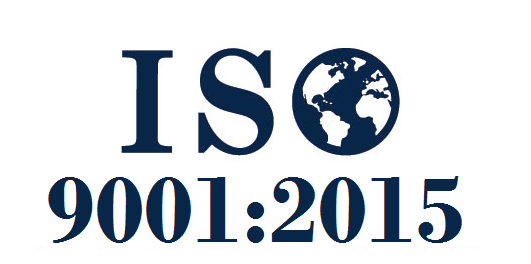In the dynamic landscape of quality management, one name stands out as a beacon of excellence and consistency – ISO 9001:2015. It’s a standard that resonates globally and guides organizations towards superior quality management practices. But before we delve into the intricacies of ISO 9001:2015, let’s start at the very beginning. What is ISO, and why is it such a pivotal force in the world of quality management?
Before we start, we should first define what ISO is? International Organization for Standardization (ISO), is an international agency composed of the national standards bodies of more than 160 countries Founded in 1947 for the purpose of having an international body to facilitate the international coordination and unification of industrial standards.


ISO 9001:2015 is an internationally recognized standard for creating, implementing, and maintaining a Quality Management System (QMS) for a company. QMS is a set of documented policies, procedures and responsibilities organised into structured system of processes to assist organisation realise their goals and objectives. Embracing ISO 9001:2015 not only fosters a culture of continuous improvement within an organization but also enhances its reputation for delivering high-quality products or services.
What Topics Does ISO 9001:2015 Cover?
ISO 9001:2015 aims to help companies meet the needs of their customers and other interested parties more effectively. Certification to the ISO 9001 standard can enhance an organization’s credibility by showing customers that its products and services meet expectations. This can be achieved by establishing a framework to ensure consistent quality in delivery of goods and services.
ISO 9001 is based on the plan-do-check-act (PDCA) methodology and provides a process-oriented approach to documenting and reviewing the structure, responsibilities, and procedures required to achieve effective quality management in an organization. ISO 9001 addresses topics such as requirement for a QMS, defining roles and responsibilities of key personnel, management of resources, and measurement, analysis and improvement of QMS gradually through internal audits, management review meetings and corrective/preventive actions.
ISO 9001:2015 contains 10 clauses. The first three sections are introductory, but the remaining 7 sections define the requirements of ISO 9001:2015 standard and will be evaluated by the certification auditors. Here is what the seven main clauses are about:



- ensure competency of key personnel who execute QMS
- communicate policies and quality targets
- controlling documented information required for organisation processes




These clauses ensure principles such as strong customer focus, the involvement of top management, engagement of people, process approach, evidence-based decision making, better relationship management, and continual improvement. The relative importance of each principle varies from company to company and may change over time.
In conclusion, ISO 9001:2015 plays a vital role in guiding organizations toward superior quality management. The ten clauses within this standard serve as a roadmap, addressing critical aspects from understanding an organization’s context to fostering a culture of continuous improvement. Whether it’s evaluating the organization’s strategic objectives, the commitment of leadership, planning for uncertainties, managing resources effectively, controlling operational processes, assessing performance, or driving improvements, ISO 9001:2015 equips businesses with the tools needed to thrive in today’s competitive marketplace. By implementing these principles and embracing a commitment to quality, companies can bolster their reputation, enhance customer satisfaction, and pave the way for sustainable growth.
What Are The Benefits of ISO 9001?
Organizations use this standard to demonstrate their ability to consistently provide products and services that meet customer and regulatory requirements. It is intended to be used by organizations irrespective of their size and industry. In addition to customer satisfaction, this standard can help companies to prepare a well-structured QMS, continually improve their processes and secure cost savings.
ISO 9001 ensures the implementation of the Quality Management System (QMS) for the companies seeking to create all the policies and procedures required to supply quality products and services that satisfy customers and regulatory needs. Companies have used this standard to improve customer satisfaction and secure cost savings. Here are some of the benefits of implementing ISO 9001 standard:
- Improve customer satisfaction: Understanding customer needs and expectations is one of the vital principles of ISO 9001. This can reduce errors which can improve customer confidence in the ability of the organisation to deliver quality products and services.
- Improvement of the company’s image and credibility: By being ISO 9001 certified, organisations will have an objective proof that shows they are committed to supply quality products and services and that they are being evaluated regularly by an independent auditor. This can give a positive company image which improves customer’s trust in your products and services.
- Additional revenue: More and more clients ask their suppliers to comply with ISO 9001 requirements. Thus, being ISO 9001 certified can help organisations get new customers and win more contracts.
- Continuous improvement culture at the core of business values: Continuous improvement is another pivotal principle of the ISO 9001. It provides a systematic approach to identify opportunities for improvement, encourage staff to improve company procedures, and achieve higher operating efficiency.
- Risk-based decision-making: ISO 9001 encourages top management to consider risks that may occur when they plan for their ongoing functions. The latest version of ISO 9001 introduced Risk-Based thinking and plan for uncertainties when identifying quality targets. Planning for the risks can help organisations to avoid unforeseen situations and incidents, reduce or mitigate liabilities, manage business reputation, and pave a way for growth. ISO 9001 helps organisations to detect problems in good time, identify the root causes of the issues, and take necessary actions to avoid the same problem in the future.
- Improve workforce performance: Implementing ISO 9001 improves employee productivity as they know the organisation is committed to produce high-quality products and services. Better internal communication provides clear processes, structures, roles, and responsibilities for personnel to ensure everyone works for the same agenda.

Key Changes
ISO 9001 was most recently updated in 2015. Changes introduced in the 2015 version are intended to ensure the adaptability of the standard to the changing environments of the market. The new version of it focuses on the following:
- enable organisations to better integrate multiple management standards
- emphasises on risk-based thinking
- ensures commitment of the top management
- avoid unnecessary paperwork
The Ongoing Success of Quality Management Standards
The benefits of ISO 9001 cannot be overstated. It is the most popular ISO standard which ensures improvement and customer satisfaction, as such, many corporations ask for this standard from their suppliers. Research results from 2017 show that, in spite of the global recession, the number of companies that implement ISO 9001 standard still remains stable worldwide.
ISO 9001:2015 Certification Audit Process
Obtaining ISO 9001 certification is a significant achievement for any organization, underscoring their commitment to quality and continuous improvement. However, reaching this milestone requires successfully navigating a rigorous certification audit. This audit, conducted by a Certification Body (CB) through third-party auditors, is a meticulous process designed to assess an organization’s compliance with the ISO 9001:2015 standards. The audit can be conducted either on-site or remotely, a choice influenced by various factors, including the organization’s size and complexity. In recent years, the prevalence of remote audits has surged due to the challenges posed by the Covid-19 pandemic. In this article, we’ll delve into the ISO 9001 certification audit process, shedding light on its various stages and what organizations can expect as they journey towards ISO 9001 certification.Passing the two-stage external certification audit is the final step to get ISO 9001 certification. The Certification Body (CB) will assign a third-party auditor (or a team of auditors) to verify your conformance against the ISO 9001:2015 requirements.
These certification audits can be conducted On-site or Remotely. In On-site audits, the auditor(s) will visit the organisation’s sites and conduct the audit in-person. The number of audit days depends on factors such as the size and complexity of the organisation. This is the most common way of auditing. However, in 2020, due to the Covid-19 pandemic, remote audits increased significantly.
Regardless of the audit type, the audit process is the same. It starts with an opening meeting where the auditor(s) and the management team will first meet. The lead auditor manages this meeting to ensure that all participants are advised of the purpose and scope of the audit and the audit plan will be reviewed and agreed upon. This meeting usually takes around 30 minutes. It is important that the top management attend either the opening meeting or the closing meeting (ideally both) to show his/her commitment to the organisational improvement.
After the opening meeting, the auditor will go through the company’s Quality Management System (QMS). This is to ensure that your organisation has the system in place to satisfy the requirements of the ISO 9001:2015 standard. To achieve this, auditor(s) often interview the person who is responsible for the overall implementation of ISO 9001 (QA manager, Compliance manager, etc.).
Auditors based on their previous experience and the nature of the auditee’s business, focus on specific parts of the QMS. Some auditors might put more time into purchasing and supplier evaluation. Others might focus on employee competency and training. However, some basic requirements such as internal audits, management review meetings, and Non-Conformances will most probably be reviewed.
After reviewing the QMS, auditors will check the records to ensure that your documentation is being implemented. They may walk into some or all of your departments, interview a couple of staff members, and observe procedures. It is highly important that you prepare your staff as well as your key personnel for the audit interviews. Your employees do not need to know everything about your QMS. Just the parts that are related to their roles and responsibilities. Depending on what they discover, Auditors may want to further evaluate a finding with the management of other key personnel.
After gathering adequate information, auditors will arrange a closing meeting. During this meeting, the lead auditor will briefly explain the audit highlights, the company’s strengths, weaknesses as well as areas of concern. If there were any identified non-conformities, the auditor will explain the procedure that needs to be followed. However, if there would be no major non-conformances, the auditor will let you know that he/she is going to recommend to the CB that you comply with ISO 9001:2015 standard and can be awarded the certificate.
Conclusion
In the realm of quality management, ISO 9001:2015 emerges as not just a standard but a guiding light. As we’ve journeyed through its ten fundamental clauses, it’s evident that ISO 9001:2015 is more than a set of guidelines – it’s a strategic choice that fuels innovation, efficiency, and trust in organizations.
From understanding an organization’s context to fostering a culture of continuous improvement, ISO 9001:2015 equips businesses with the tools needed to thrive in today’s fiercely competitive marketplace. It’s more than just compliance; it’s a commitment to quality that enhances customer satisfaction, credibility, and ultimately, the bottom line.
The benefits are undeniable – from customer trust to additional revenue streams, from making informed decisions to nurturing a culture of continuous improvement. ISO 9001:2015’s influence transcends mere certification. It symbolizes an organization’s dedication to delivering high-quality products and services, leading to happier customers and amplified reputation.
In a world of rapid change, ISO 9001:2015 serves as a beacon of quality and consistency. By embracing it, organizations not only fortify their image and credibility but also secure their position at the forefront of their industries. The rewards are waiting for those who choose to embark on this journey towards excellence. As ISO 9001:2015 continues to shape the future of quality management, organizations will find that the path to success is clear, well-defined, and marked by lasting benefits.




